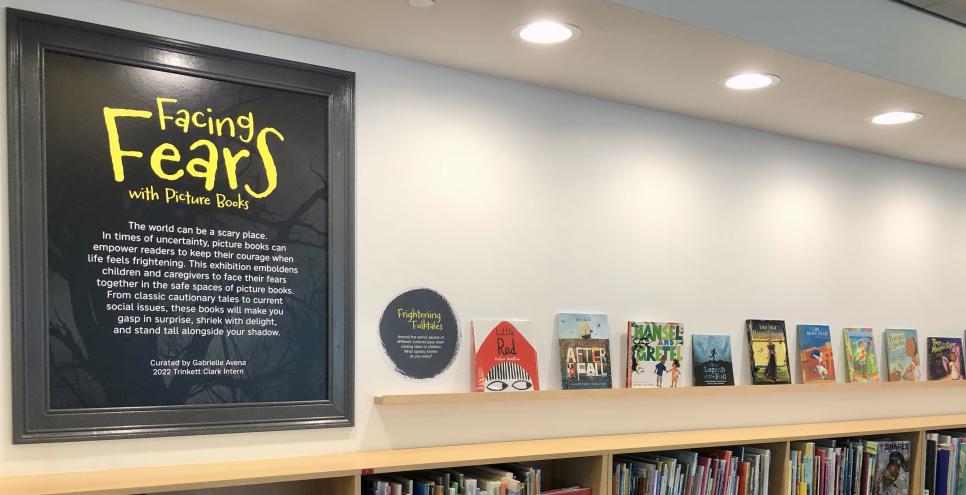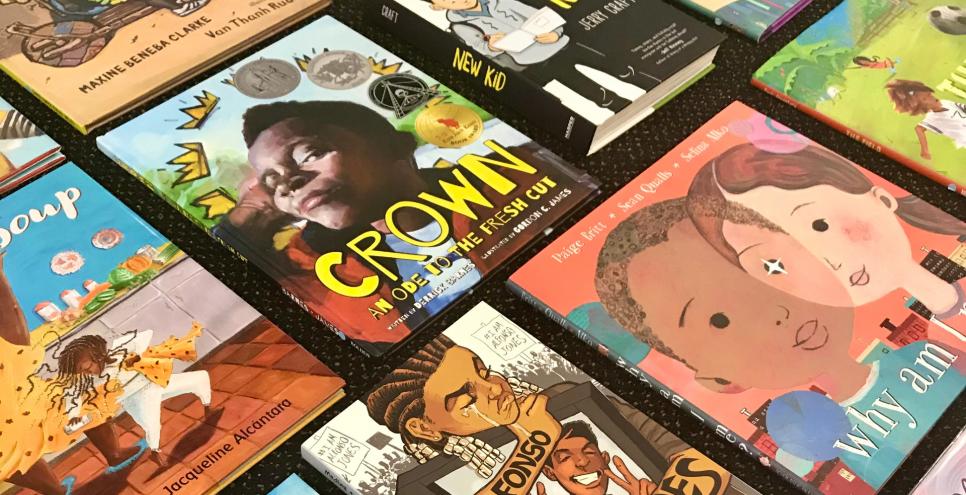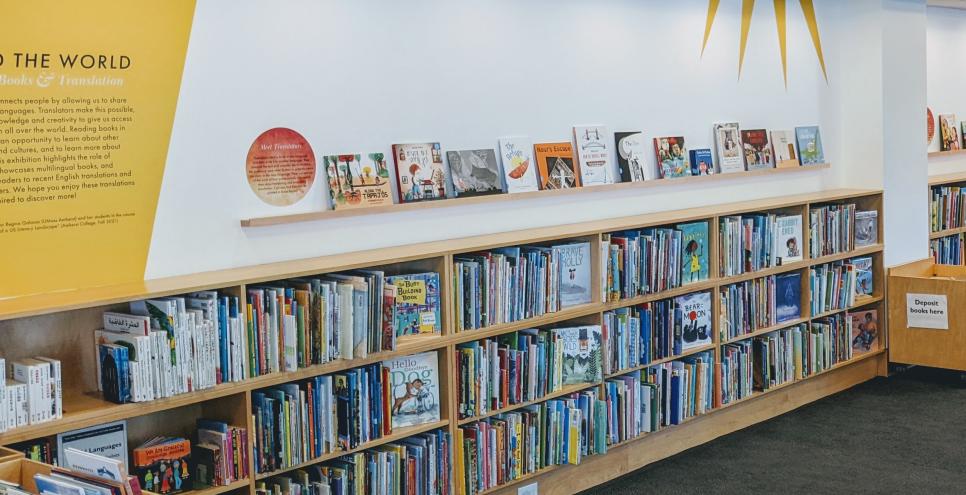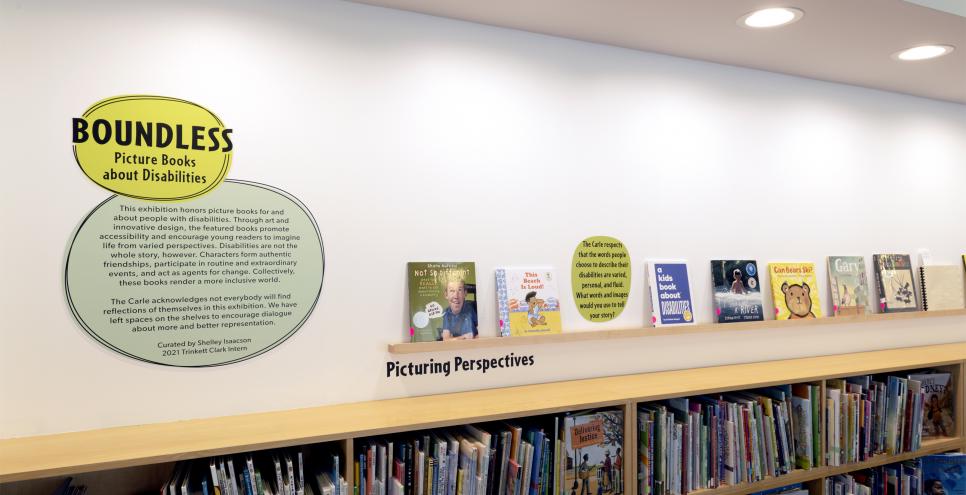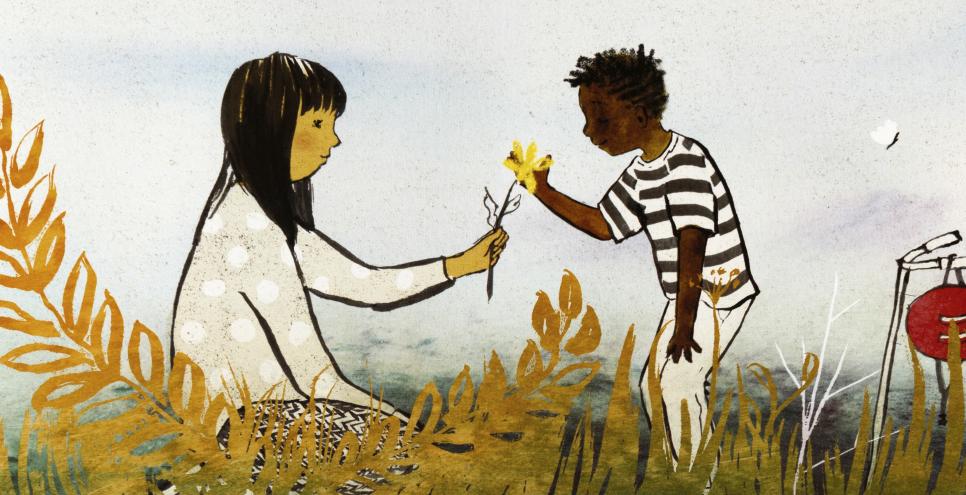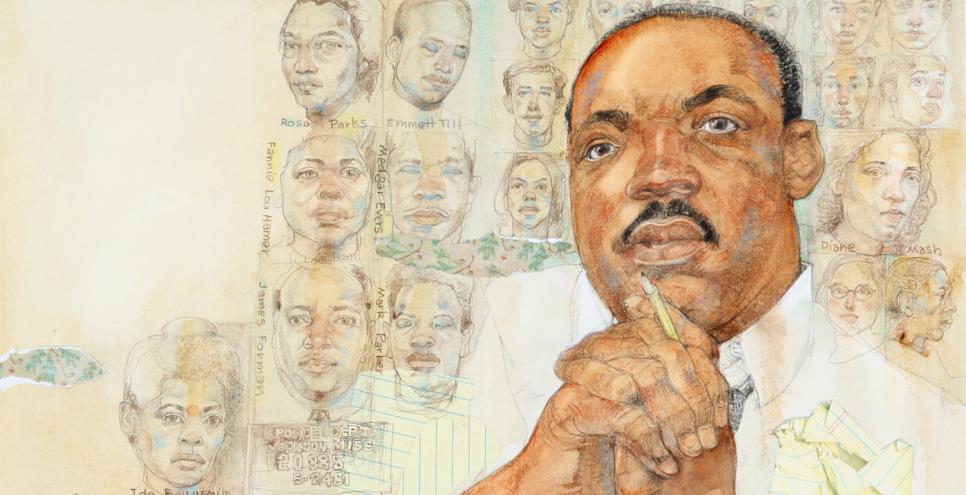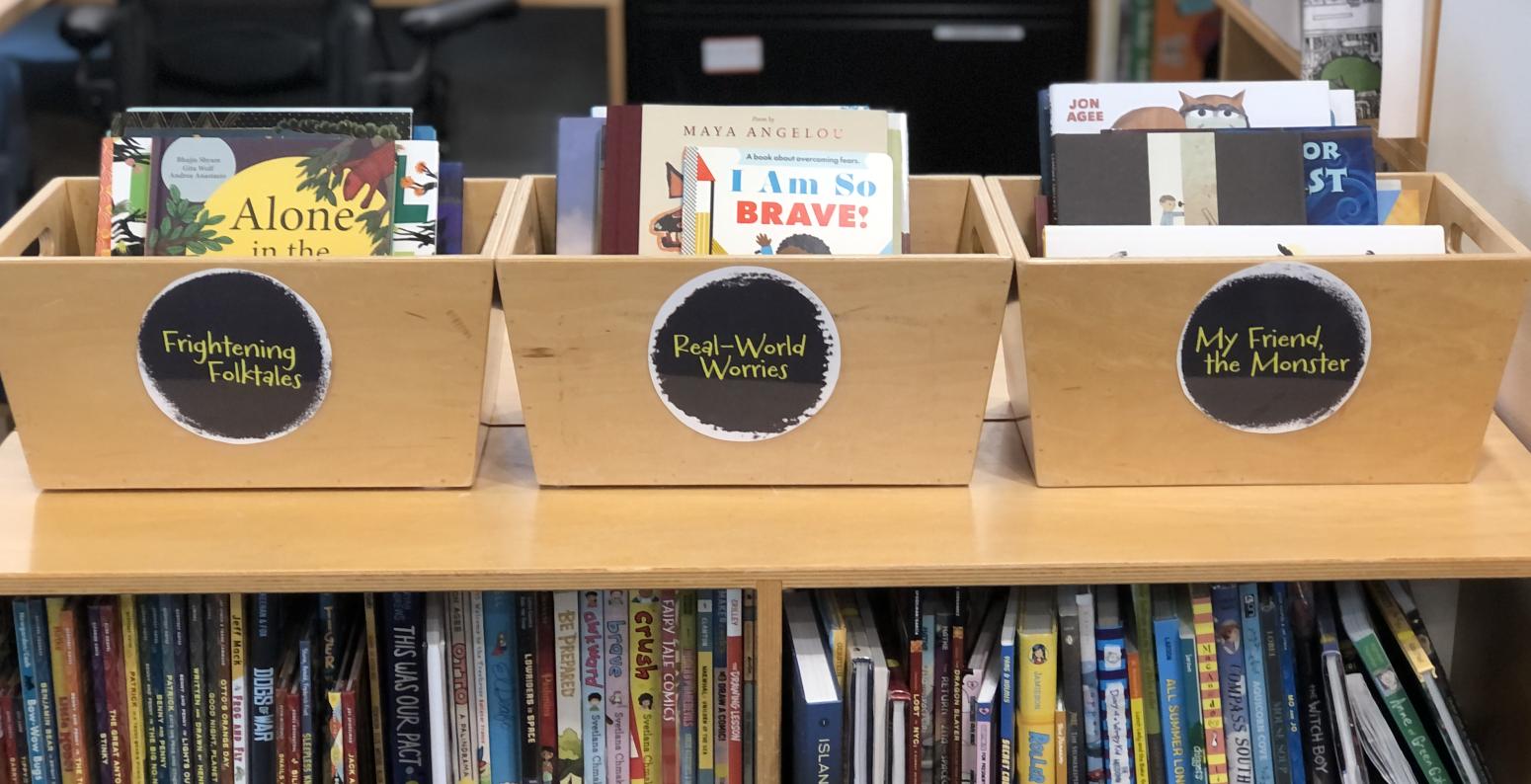
Tackling Tough Topics in the Reading Library
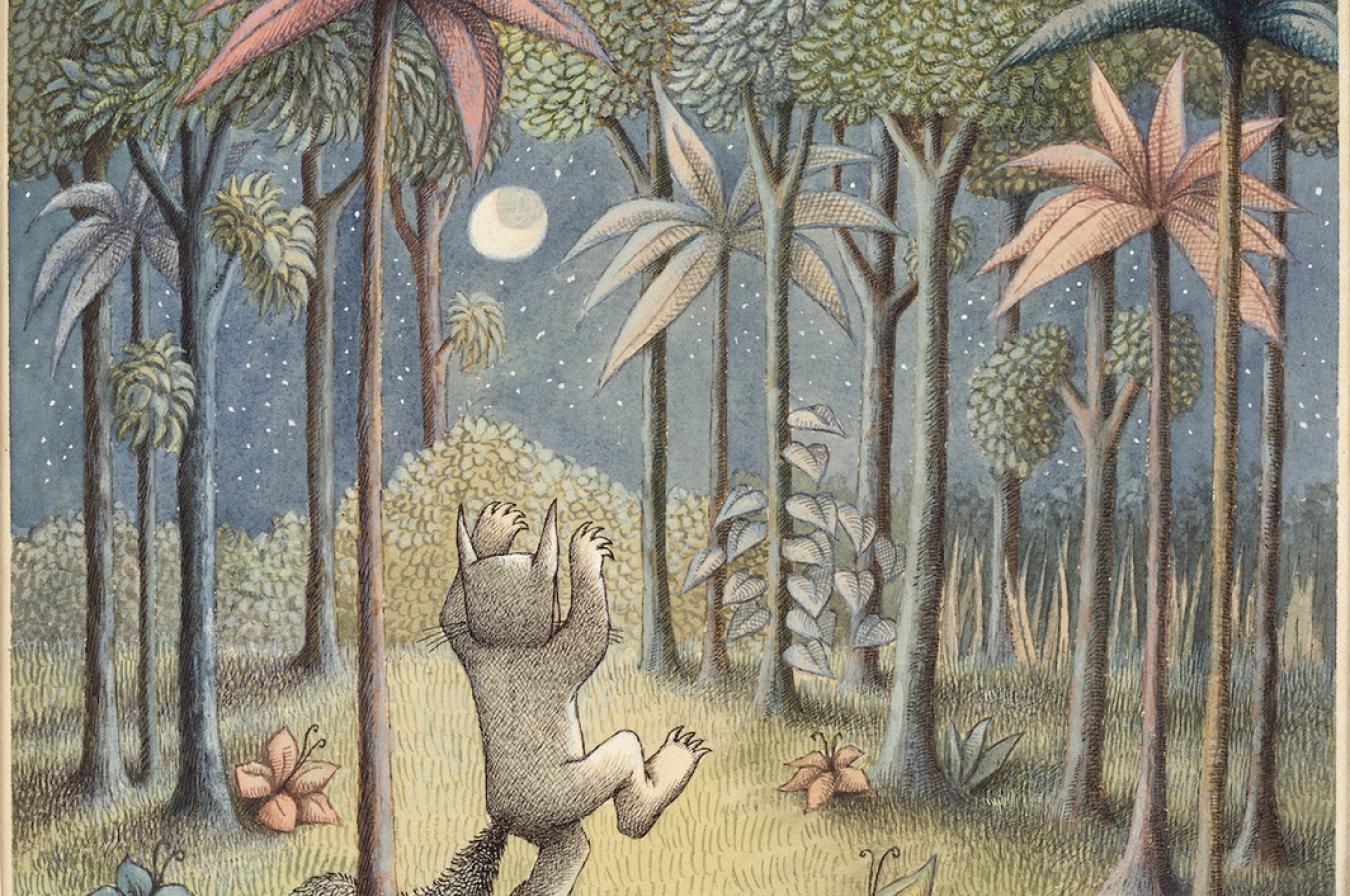
What is obvious – and what is too often overlooked – is the fact that from their earliest years children are on familiar terms with disrupting emotions, that fear and anxiety are an intrinsic part of their everyday lives, that they continually cope with frustration as best they can. And it is through fantasy that children achieve catharsis. It is the best means they have for taming Wild Things.
- Maurice Sendak
Many art museums - like the artworks they display and the stories they tell – reflect our complex, often turbulent world. Inevitably, museums address topics that can be difficult for some visitors, especially those with young children. As a parent and former preschool educator, I understand the urge to shield kids from challenging experiences and emotions. How many times, listening to the radio with my four-year-old in the backseat, have I turned down the volume on yet another tragic event? But I’m also aware that, despite my best efforts, my son – like all kids – is “on familiar terms with disrupting emotions,” and that part of my job as a parent is to offer him opportunities to safely process those feelings. We know that kids are naturally curious and constantly seeking answers, potentially in settings less safe and supportive than when they’re with caregivers. What role can museums play in supporting families as they navigate tough topics? How do we provide safe spaces and resources for families to grapple with these topics in a responsive, adaptive way?
At The Carle, we find ourselves asking these questions quite often. In addition to collecting, preserving, and exhibiting original illustrations, we encourage visitors – most of whom are families with young children – to discover and share their own stories. When planning gallery exhibitions, our education and exhibition teams work closely to create family labels, activities and resources that support visitor engagement. For exhibitions like Picture the Dream: The Story of the Civil Rights Movement through Children’s Books and The Undefeated: An Exhibition of Original Paintings by Kadir Nelson, these materials were designed to support conversations about topics including race, racism, equality, and activism.
While gallery exhibitions demand years of planning and resources across departments and even institutions (as with traveling exhibitions), our Reading Library has emerged as a flexible option for book exhibitions. A drop-in space for visitors of all ages to read, play, and share stories, the library’s collection features over 6,000 contemporary and classic titles. Since books are easier to acquire and display than original works of art, we’re able to quickly curate book exhibitions that explore themes in children’s literature and respond to current events and the interests of visitors.
The first of these book exhibitions, Black Voices: Picture Books as Antiracist Resources, opened in the spring of 2020. The Reading Library had recently concluded a two-year diversity audit to help identify gaps in its collection. Among other things, the audit revealed our need to include more titles about people of color by BIPOC creators. We’d been building towards a more inclusive collection when - in the wake of the murder of George Floyd – Americans were urgently seeking out important, long overdue conversations about race and racism.
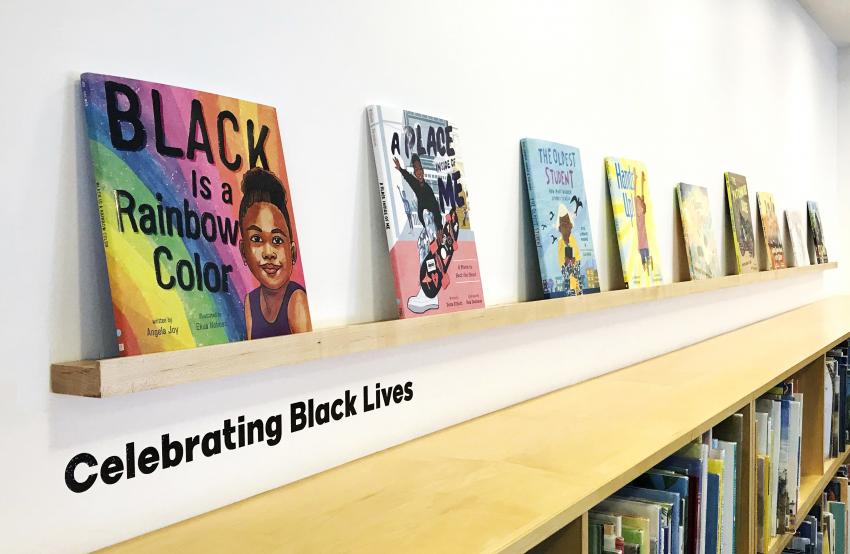
As the Museum prepared to reopen amidst the pandemic, we wanted to use the library space to deepen our own learning and share resources with visitors. The Black Voices exhibition featured 70 recent titles by Black artists and writers and shared a range of stories: books that encourage open discussion about representation, race, and racism; books that celebrate Black lives and experiences; books that advocate for solidarity in the struggle for social justice.
Since spring 2020, the library has hosted six more exhibitions. For each one, the library team seeks partners to collaboratively curate. For some shows, staff across departments work together to select books, bonding over their shared love of books. Boundless: Picture Books about Disabilities was curated by Shelley Isaacson, a graduate from Harvard’s School of Education with an MA/MFA in Children’s Literature from Simmons University. Read the World: Picture Books and Translation was curated by undergraduate students at neighboring Amherst College. In addition to strengthening relationships both within and beyond the museum walls, these collaborations have allowed the Museum to see its collection – and the role of picture books – from new perspectives.
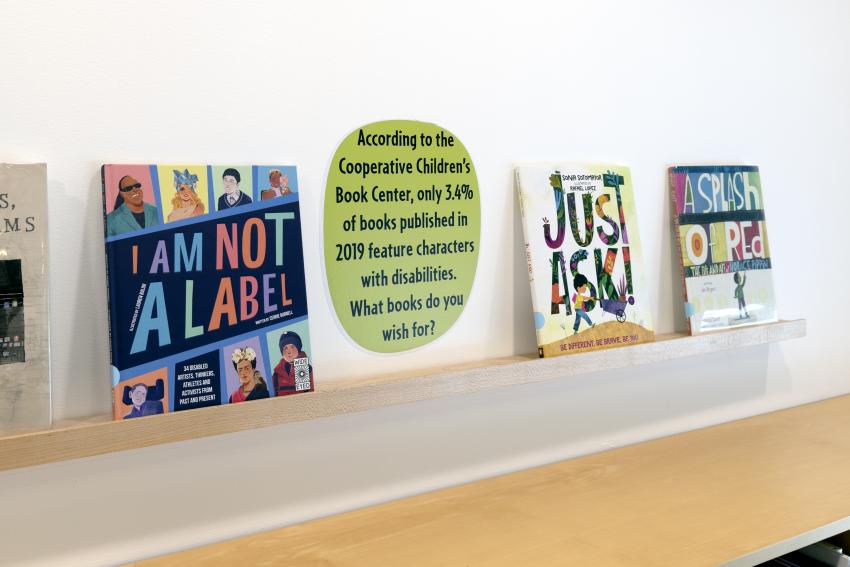

Across exhibition themes, picture books serve as adaptive resources. By selecting books with different types of stories, tones, and subject matter, we hope to provide caregivers with a range of entry points into a given topic. Books are displayed on ledges according to sub-themes, allowing caregivers to browse and decide which books are a good fit before sharing with their child.
Library staff are also available to answer questions and make recommendations when requested. For caregivers who may lack experience or confidence talking about a given topic, books can offer a solid foundation, providing words and pictures to describe a challenging concept, emotion, or situation. Illustrations are an especially powerful tool because they invite readers of all ages – even those who aren’t decoding text - to look closely and talk about what they see. Picture books are also incredibly accessible. Though we don’t loan books, exhibition book lists – available in the library and online – enable families to seek out books and continue exploring after their visit.
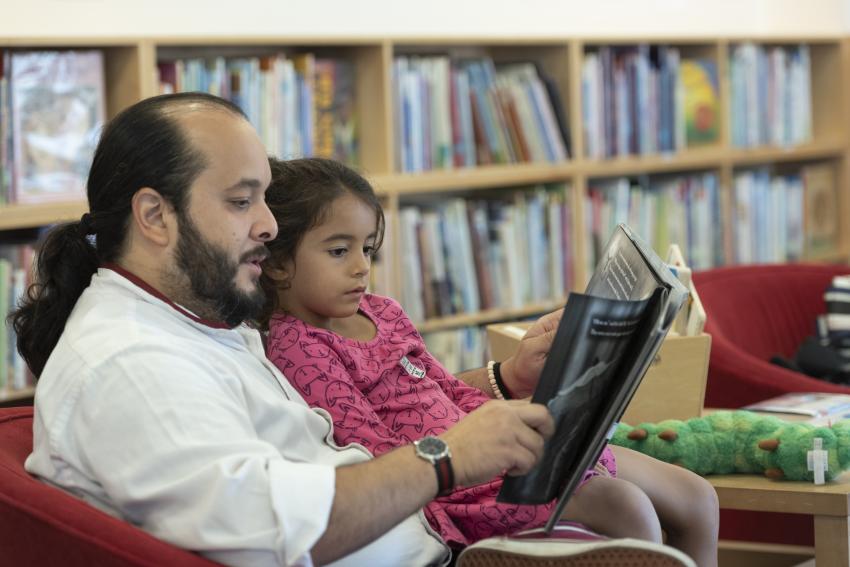
Alongside the books, family labels model age-appropriate language and open-ended questions to spark conversation about the show’s themes. Daily story time programs invite families to engage with featured books in a supportive group setting. Led by staff trained in the Whole Book Approach, the Museum’s interactive, inquiry-based approach developed by former Carle educator Megan Dowd Lambert, these programs invite visitors to share stories through movement, song, and play while looking closely and learning about the art and design of picture books. In addition to experiencing the book with their child in that moment, story times offer caregivers an opportunity to observe and practice strategies for engaging their child in interactive, emotionally responsive reading experiences beyond their visit.
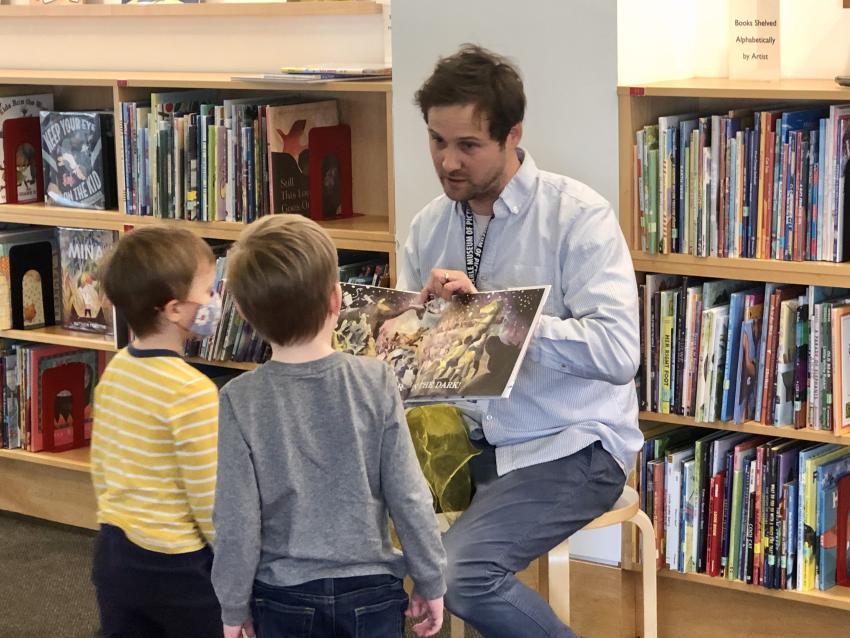
For those looking to explore further or who are unable to visit in person, our Story Board articles take you behind the scenes to share the inspiration and process behind our book exhibitions. Articles by curators include links to additional online resources, booklists, and more. Our Education team also offers professional development workshops on relevant themes. Workshops such as Exploring Race and Representation in Picture Books and Little Books, Big Feelings: Picture Books and Social Emotional Learning invite adults to discover tools and share best practices for using picture books to engage in conversations about tough topics with kids.
While we continue to gather data regarding visitor experience in the library, feedback about book exhibitions has been overwhelmingly positive. Visitors often express an appreciation for the values reflected in our book collection. “I trust I can pick up any book off your shelves without worrying about giving it to my kids,” a guest recently shared. In addition to developing essential learning skills, picture books inspire empathy and encourage compassion for readers of all ages. Picture books can fill us with excitement, curiosity, and joy. They can also help us to see ourselves and others more clearly and to embrace the world – and all its wild things - with wonder, compassion, and courage.





